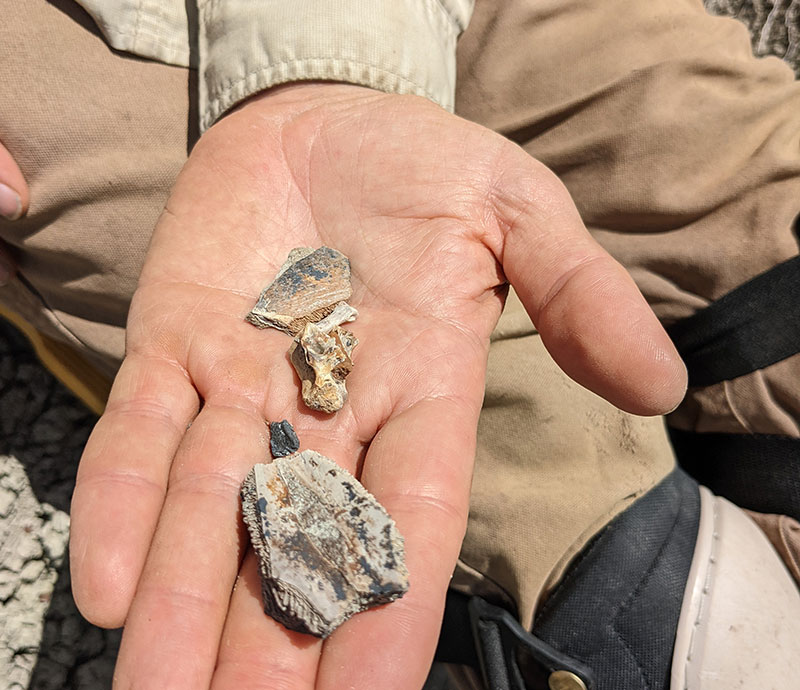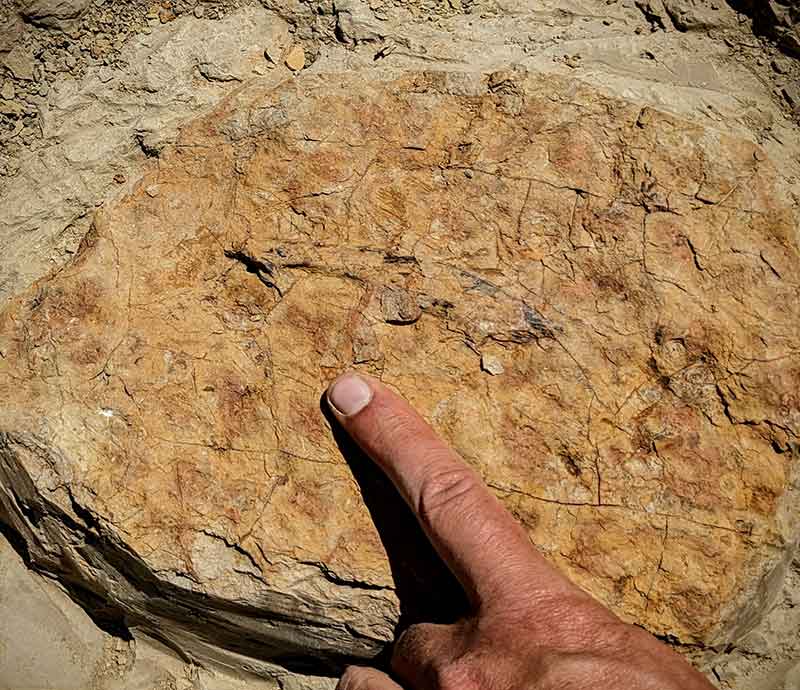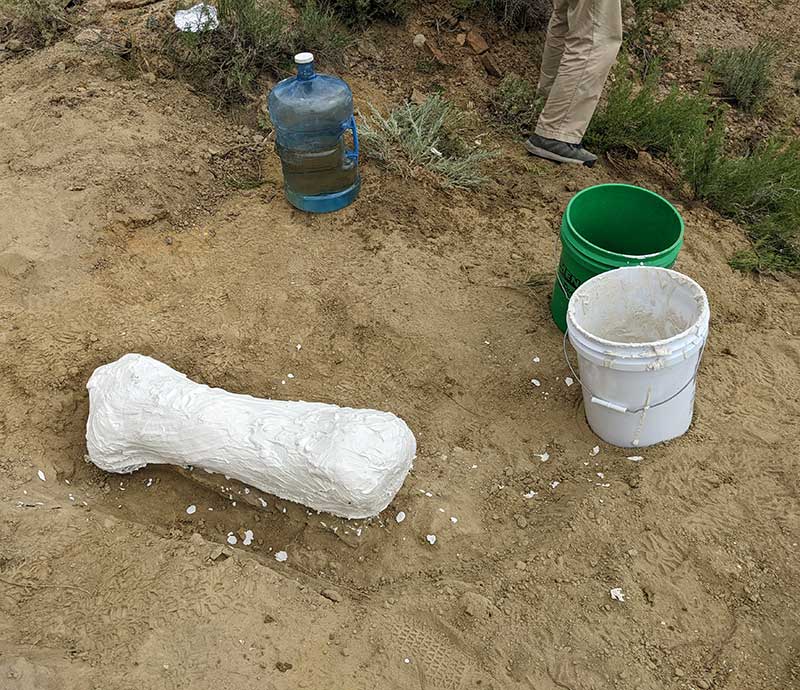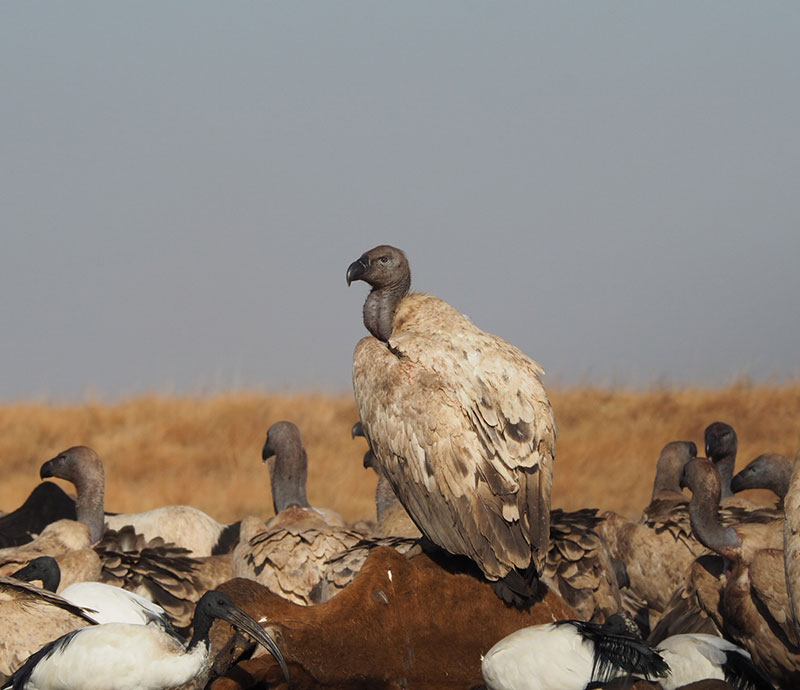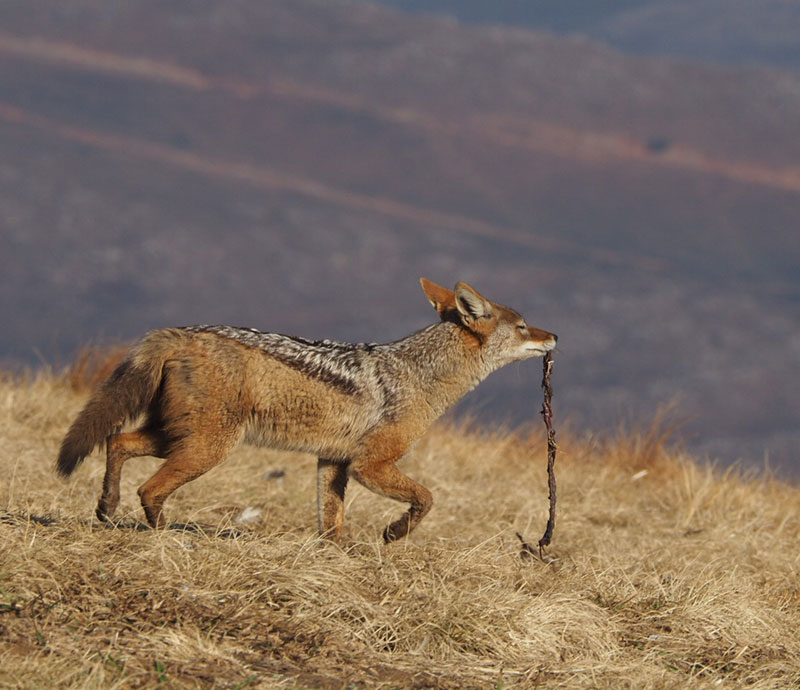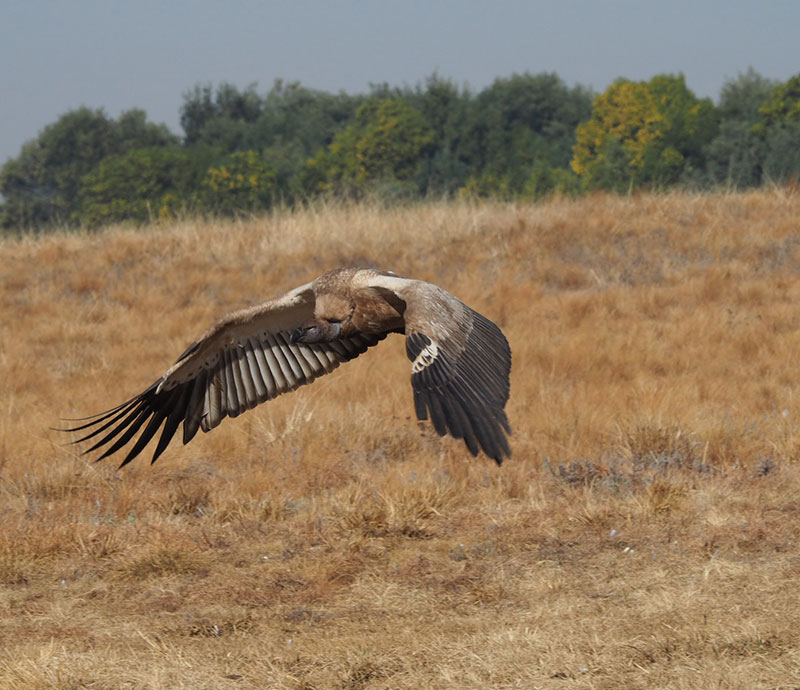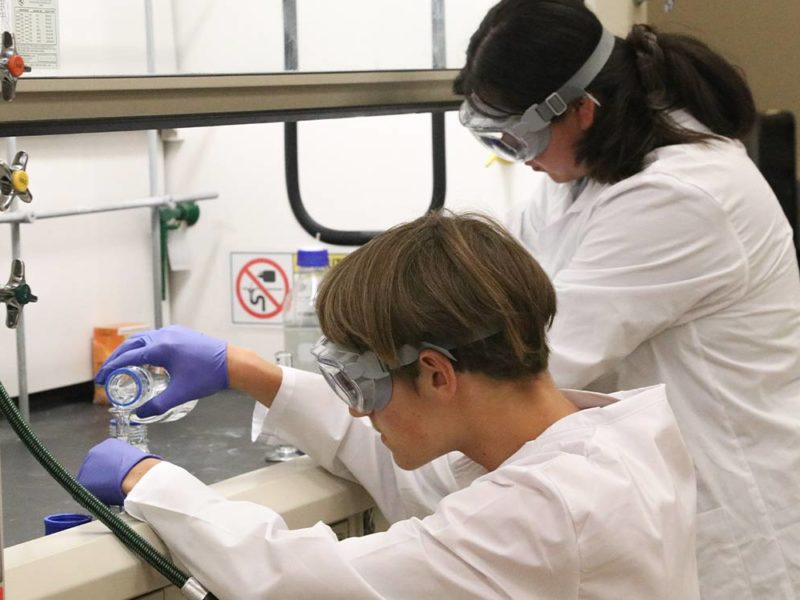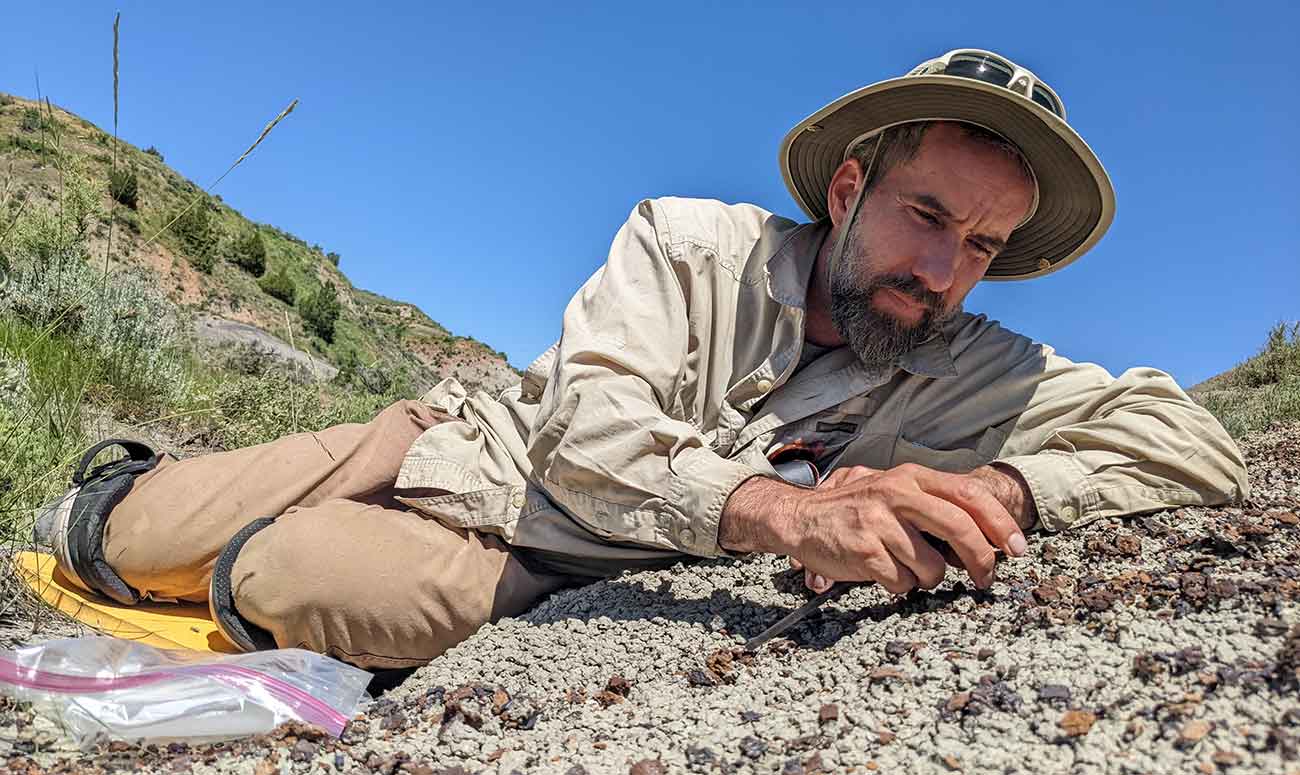
Seveyka helps efforts to understand long extinct, currently endangered species
Although often seen dissecting various things with students in biology labs, Seveyka switched gears this summer and dug up the remains of species wiped out by a dinosaur-killing bolide 66 million years ago before working to help endangered species hanging on by a thread today.
First, Seveyka volunteered with fossil collecting efforts of the North Dakota Geological Survey, which serves as the primary source of geological information in the state, publishing maps and reports on the mineralogical, paleontological and geochemical resources of North Dakota. He collected fossils of turtles, fish, crocodiles and lizards from what was a swamp a few million years after the asteroid wiped out the dinosaurs. Scientists can use these collections to explore the dynamics of ancient ecosystems.
Next, he volunteered with paleontology digs in the Hell Creek Formation, famous for the iconic T-Rex fossils and the end-days of the dinosaurs. Here he scouted for new fossil sites, pulled large bones out of field sites, excavated for bones, and collected microfossils of mammals, fish and raptors.
After working with remains of long-extinct species, he traveled to South Africa and Lesotho as a volunteer to assist efforts to save endangered African vultures from extinction from human causes. The volunteer work consisted of hiking up mountains to monitor vulture nests, tracking vultures and other wildlife using camera traps, and cutting up carcasses to stock feeding sites with safe, poison-free food for resident Cape, White-backed and Bearded Vultures.
Through this work, Seveyka brought back some specimens to add to YVC’s collection for use in biology labs. In addition, the experiences will be used in the biology for majors course that covers diversity of life and extinction.



